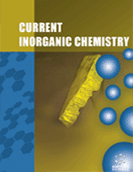Abstract
Background: Polyoxometalate (POM) clusters are molecular metal-oxide that possess advantages in integrating functionalities at the molecular level. Redox activity is key characteristic of the POMs where the electron-withdrawing ability is changed according to environments that surroundings POMs. Achieving switching phenomena of electronic state of POMs are of great interest for various applications.
Objective: It is of fundamental interest to develop switching of electronic state of POMs by outer stimulus. For this purpose, we investigate the solvent effect to electron-withdrawing ability of POM so as to coupling with macroscopic electric property of the POM based salts.
Method: We have developed these characteristics of POMs to design CT system by hybridizing with pyridyl-tetrathiafulvalene (TTFPy) molecule. TTFPy was reacted with Ni(II) and [α-SiW12O40]4-, yielding a single crystal with composition of [NiII(DMSO)5(TTFPy)]2[α-SiW12O40] (1). And we have revealed that a single crystal of the compound turns crystal color from orange (1) to black (1') by immersing crystals in methanol. In this paper, we newly analyses a structure of the single crystal 1 by X-ray diffraction analysis in addition to investigation of this chemo-chromic characteristics using varieties of organic solvent.
Results: It was revealed that solvent acceptor number was important to consider the chromic in which transition from 1 to 1' was induced with organic solvents whose acceptor number was larger than 18. In addition, electrical properties of both crystals and revealed that conductivity was increased in 1'.
Conclusion: Our results show that solvent-induced chemo-chromic characteristics were triggered by immersing crystals in a solvent. Other chemo-chromic characteristics will be explored by surrounding crystal in more ion rich environment tuned by Li+ ions toward electrode materials for Li ion batteries, for example. In addition, our findings reported here emphasize interest and importance of POM-based hybrid in which grand state is not in CT state.
Keywords: Polyoxometalate, ttf, charge transfer, electrical conduction, transition, chromic characteristics.
Graphical Abstract
 19
19 2
2 2
2 1
1

